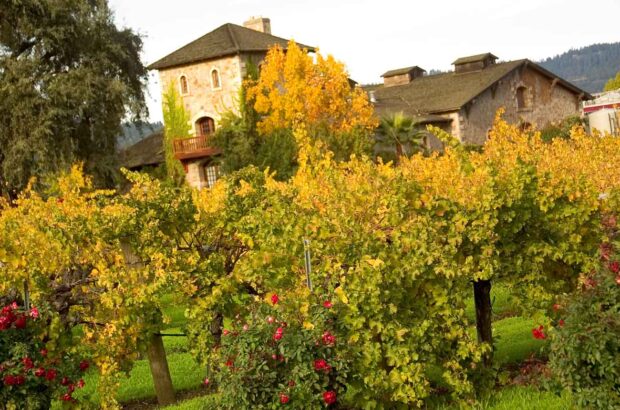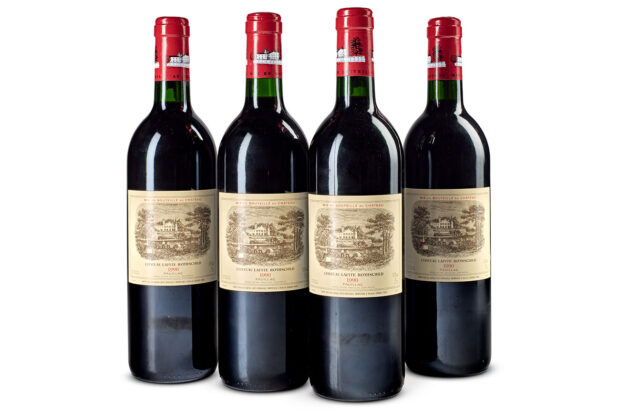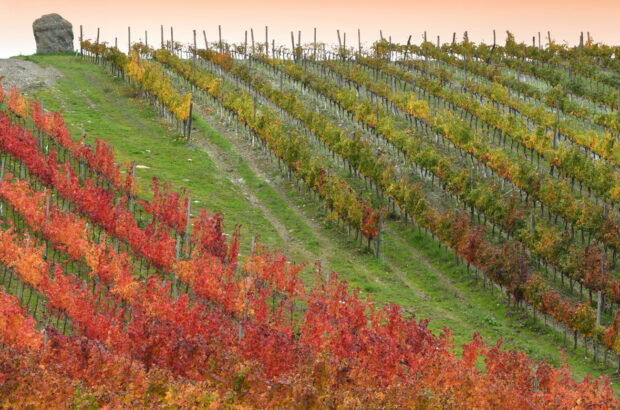The yield for the 2013 Champagne harvest has been set at 10,000 kilograms per hectare, with an additional 500kg/ha allowed to be released from producers' reserve stocks next February, the Comité Interprofessionnel du Vin de Champagne (CIVC) has announced.
Vineyards in Champagne
Vineyard owners can also put up to 3,100kg/ha more into their own reserve stocks (Resérve Individuelle), providing that reserve doesn’t exceed 10,000kg/ha, which is unlikely in most cases given the small 2012 harvest.
On average, across the entire appellation, producers hold 6,400kg/ha in their reserves.
Réserve Individuelle is still wine, held in tank, that hasn’t been though secondary fermentation. This stock is held by individual producers as security to be used when vineyards are affected by natural disasters limiting overall production.
Setting a yield of 10,500kg/ha, the equivalent to 305 million bottles of Champagne, signifies the shipment levels the CIVC believes will be reached by the end of 2013. This is roughly 3% down on the 315 million bottles shipped in the 12 months to the end of June 2013 and just under 1% down on the total shipments of 308.76m bottles in 2012.
While some view this as conservative, others see it as optimistic with overall shipments in the first six months of 2013 dropping by 3.1% to just 108m bottles.
Michel Letter MD of Pernod Ricard’s Champagne interests (G.H.Mumm and Perrier-Jouët) who sits on the CIVC statistics committee which provides the information that informs yield decisions says: ‘While some wanted 10,000kg/ha to be the maximum, the houses with lower stocks were looking for more like 10,800kg/ha, but the difference between the two sides was not that large, and that’s why we reached agreement quite rapidly compared with last year.
‘In 2012 only 197m bottles were shipped between July and December and if we see that volume decline by 3.1% we’ll be looking at around 294m bottles for 2013,’ he added.
In the European market, shipments were down 7.1% to just over 24m bottles while the French domestic market fell 5.1% to 58.8m bottles. Only markets outside Europe grew, up 6.8% to 25.1m bottles.
Last year while the highest allowable yield was set at 11,000kg/ha, average yields only reached 9,242kg/ha. However Jean-Luc Barbier, CEO of the CIVC, says; ‘The situation is different this year with the harvest volume expected to be much higher. Flowering took place in early July in very favorable weather conditions leaving hope for a potentially beautiful harvest.’
This isn’t the whole picture as Letter notes; ‘In some areas there was heavy rain during flowering and there are problems with ‘millerandage’ in Côtes des Blanc which will affect yields. Pinot noir vineyards are OK however, with a lot of grapes.’
‘10,000kg/ha is a reasonable level for the 2013 harvest. It shows that both négoce and vignerons are wise and that they have the common interest of our region in mind which pleases me very much,’ says Michel Drappier.
Jean-Baptiste Lécaillon at Louis Roederer also sees it as ‘a good decision: the 10,000kg/ha figure plus 500kg/ha déblocage (the amount of wine taken from producers’ individual reserves) covers more or less the projected sales. If the sales happen to be higher than expected, a new déblocage could be decided.
‘Also, let’s not forget that we are facing an October harvest which is always difficult to ripen. The difficulty will be the actual yield (agronomic yields) that could be high in the late ripening areas due to late flowering under perfect sunny conditions. The yields could be very high and ripeness could be complicated.’
Written by Giles Fallowfield







